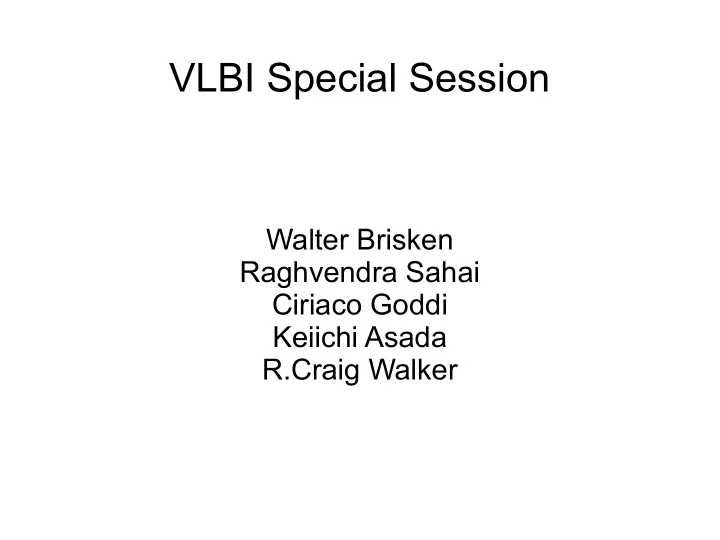

VLBI Special Session Walter Brisken Raghvendra Sahai Ciriaco Goddi Keiichi Asada R.Craig Walker
VLBI's key qualities ● (sub-) milliarcsecond resolution ● AU-scale in MW, pc-scale extragalactic ● Astrometry at 10s of microarcsecond precision ● Requires high surface brightness ● Brightness temperatures > 10e5 K ● No thermal molecular emission observable ● Special relationship to gamma-ray telescopes ● Unresolved gamma-ray objects likely detectable with VLBI: pulsars, AGNe, GRB, ...
VLBI Capability/Target Matrix Target Time Astrometry Imaging Polar'n Wide-field Spect'y evolution AGNe Masers SN, GRB, TDE Colliding winds MicroQSO Active stars Pulsar, bow shock Critical capability Of secondary importance Not very relevant
NGC 4258 Distance ● Example of multiple capabilities being used together ● Spectroscopy → physical velocity ● Astrometry → angular velocity ● Together a distance is determined Herrnstein et al. 1998
Megamaser cosmology project Braats, Kuo et al. ● Builds on NGC4258 result; extends to other sources ● Goal: Measure Hubble constant ● Determine geometric distance to AGNs hosting water maser disk through orbit modeling high velocity maser motions ● Couple to redshift determined from systemic maser velocity ● Goal: Measure black hole masses precisely ● 1st results from galaxies within the Hubble flow: H 0 =69±11 km/s
AGNe as resources ● AGNe form the most important class of VLBI calibrator sources ● Used for VLBI astrometric and polarization references ● Understanding of their time evolution is crucial for accurate results ● VLBA archive is teeming with calibrator data of scientific quality ● AGNe form the basis of the International Celestial Reference Frame
New/upcoming instrumentation ● Phased-array ALMA ● 10x sensitivity, 2x resolution improvement in mm ● To probe the accretion disk of Sgr A*, M87 ● RadioAstron (space-ground VLBI) ● Baselines up to 50,000 km ● To probe AGNe at 50 microarcsecond resolution ● To measure or limit the highest brightness temperature sources (10e14K) ● VLBI2010 ● AGN core stability (in freq, time, pol)
Next speaker...
Key questions to ask of VLBI ● AGB → PPN ● Structure/evolution of water fountains ● Nature of mass loss and its evolution during transition ● YSOs ● Does collimation depend on YSO age? Or mass? ● Can a massive YSO still accrete once a HC HII region has formed? ● AGN jets ● Acceleration/formation/collimation mechanism? ● Why do AGN jets exist at all? Why not ubiquitous? ● Origin of circular polarization? ● General ● Distances (via trigonometric parallax or other?)
Recommend
More recommend